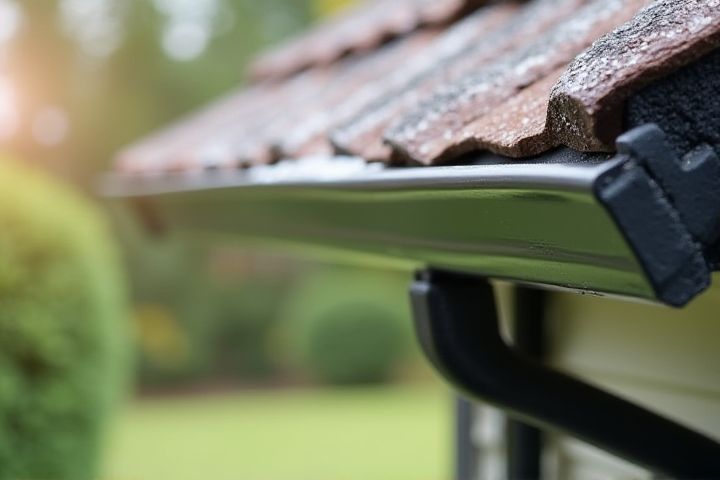
Cleaning your house gutters should be performed at least twice a year, ideally in the spring and fall. During these seasons, leaves and debris are more likely to accumulate, potentially causing clogs that can lead to water damage. If you live in an area with heavy tree coverage, consider increasing the frequency to three to four times a year. Regular maintenance helps prevent pests like mosquitoes and protects your roof and foundation from costly repairs. Make sure to check gutters after storms, as high winds and heavy rain can result in additional debris buildup.
How Often To Clean House Gutters
Biannual cleaning schedule
Cleaning house gutters biannually is essential for maintaining proper drainage and preventing water damage. Aim to schedule one cleaning in the spring, after winter storms, and another in the fall, following the leaf drop season. This routine helps remove debris, such as leaves and twigs, that can lead to clogs and overflows. Regular biannual maintenance can extend the lifespan of your gutters and reduce costly repairs, ensuring your home remains protected year-round.
Early spring debris removal
Cleaning your house gutters in early spring is essential, ideally every six months, or more frequently if you have overhanging trees. By removing debris such as leaves, twigs, and dirt, you can prevent water damage, which costs homeowners an average of $3,000 per incident. Ensure your gutters are clear to facilitate proper drainage, reducing the risk of mold growth and preserving roof integrity. Regular maintenance can extend the lifespan of your gutters, saving you money on repairs in the long run.
Late autumn leaf clearing
Cleaning your house gutters in late autumn is crucial for preventing clogs caused by fallen leaves. It's advisable to inspect and clean your gutters at least twice during this season, particularly after peak leaf drop, to ensure proper water flow and avoid water damage to your roof and foundation. You may need to remove debris manually or use a gutter cleaning tool designed for this task. Regular maintenance during this time will safeguard your home against potential leak issues as winter approaches.
Post-storm inspections
Post-storm inspections of your house gutters are essential to ensure proper drainage and prevent water damage. It's advisable to check and clean your gutters within 24 to 48 hours after a significant storm, as debris can quickly accumulate and block water flow. Look for leaves, twigs, and other materials that could hinder the gutter's function. Regular maintenance following storms not only extends the lifespan of your gutters but also safeguards your home's foundation and landscaping from potential flooding.
Monitor gutter guards
It is recommended to clean your house gutters at least twice a year, ideally in spring and fall, to ensure optimal performance, especially if you have installed gutter guards. When using monitored gutter guards, inspect them quarterly to remove any debris accumulation and ensure proper water flow. Signs such as overflowing gutters or pooling water near the foundation can indicate the need for immediate cleaning. Regular maintenance can prevent costly water damage, with average repair costs ranging from $1,000 to $5,000, depending on the severity of the issue.
Seasonal weather adjustments
Cleaning house gutters is essential, especially during changes in seasonal weather. In fall, it's crucial to remove fallen leaves to prevent blockages, while spring cleaning addresses debris from winter storms. If you live in an area with heavy rainfall, consider cleaning them every three months to ensure effective drainage. You should also check gutters after severe weather events for any damage or accumulation that could lead to overflows and potential water damage to your home.
Check downspouts regularly
Cleaning your house gutters is essential for proper drainage, typically recommended at least twice a year--ideally in spring and fall. To maintain functionality, check downspouts regularly for clogs or blockages, as these can prevent water from flowing efficiently. Even after heavy rain, verify that water is flowing freely through the downspouts, as improper drainage can lead to costly water damage. Consider investing in gutter guards to minimize debris buildup and extend the time between cleanings, ensuring your home stays safe and dry.
Maintenance for surrounding trees
To maintain optimal performance, clean your house gutters at least twice a year, preferably in early spring and late fall. If your property has surrounding trees, especially those that shed leaves or twigs, consider increasing this frequency to three to four times annually. This proactive approach prevents clogs that can cause water damage or attract pests. Regular gutter cleaning protects your home's foundation and landscaping, ensuring long-lasting durability and safety.
Watch for gutter clogs
Regularly inspecting your gutters is crucial for preventing clogs that can lead to water damage. It's recommended to clean your gutters at least twice a year, ideally in spring and fall, to ensure they're free from leaves, twigs, and debris. If you notice water overflowing from the gutters or pooling around your foundation, it's a clear sign that you may need to clean them more frequently. Taking proactive steps to maintain your gutters will protect your home and enhance its longevity.
DIY vs. professional cleaning options
Cleaning house gutters should be performed at least twice a year, ideally in the spring and fall, to prevent clogs and water damage. While DIY gutter cleaning can save you money, it requires a ladder, safety gear, and proper tools like a trowel and garden hose, which may deter some homeowners. Professional cleaning services typically charge between $100 and $250, depending on the size of your home and its location, offering convenience and expertise. Consider your comfort level with heights and the condition of your gutters when deciding between DIY and hiring professionals.
